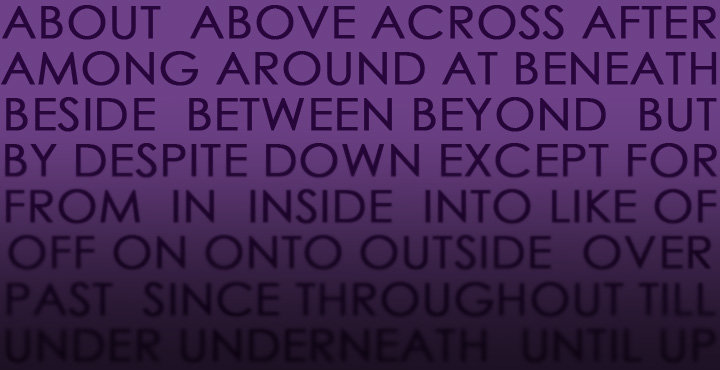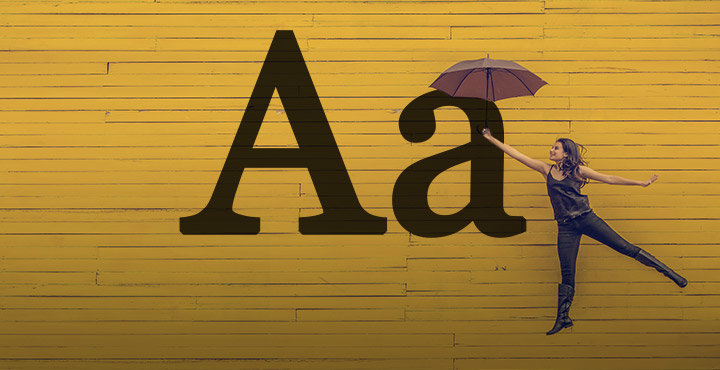Don't Underestimate These Three Little Words
Put simply, an article is a word that combines with a noun. Articles are actually adjectives because they describe the nouns that they precede. In English, there are only three articles: the, a, and an. However, the three are not interchangeable; rather, they are used in specific instances.
The following is some advice from our expert English editing staff regarding how to properly use articles.
Indefinite articles (a and an)
If indefinite articles are the proverbial thorn in your side, the good news is that you don't need a lot of grammatical jargon to understand their usage. You simply need your ears (okay, and maybe just a little grammatical jargon).
In English, a and an are indefinite articles, which means that they don't refer to anything definite or specific. If someone were to say, "Give me an apple," you might be inclined to run out and pick one from the tree outside, or you may even run to the store and buy one. By using the word an, the speaker has let you know that he or she is looking for any apple rather than a specific one.
The same can be said for the article a. If someone told you there's a dog on the road, you would probably want to go out and save it before a car came by. Furthermore, you would know it's not your best friend's dog because the speaker chose to use the word a rather than call the pooch by name. Hence, it's understood that the dog on the road is one of the millions of dogs in the world and is therefore not specific.
How do I know which one to use?
That's a very good question. Fortunately, the answer is quite simple. It's about listening to the words you're using. The rule for indefinite article usage is as follows:
Use a before nouns (or adjectives) that start with a consonant sound.
Use an before nouns (or adjectives) that start with a vowel sound.
Here are some examples from our English editing professionals:
Please give the dog a cookie.
(The noun cookie starts with a consonant sound, so a must be used.)
Please give the dog a delicious cookie.
(Our editing professionals have put the adjective delicious in front of cookie, but as you can see, delicious still starts with a consonant sound, so a must still be used.)
That's an old car. (In this case, the word after the article is old, which starts with a vowel sound. Consequently, our English editors must use an.)
Remember that you're listening here. This isn't about the letter c or d being a consonant or the letter o being a vowel; it's about the sound they make (i.e., vowel sound or consonant sound). Here's another example that might help you understand:
I need to work for an hour before we go to dinner.
You might think that because the indefinite article comes before a consonant, our English editing experts should be using a, but think for a moment about the sound that the word hour makes. It's actually pronounced like the possessive pronoun our, which starts with the o vowel sound. Therefore, because we're starting with a vowel sound (regardless of whether the first letter is actually a consonant), we must use an. The same is true for the opposite (i.e., a vowel that makes a consonant sound):
A union
The word may start with a u, but think for a minute about the sound that the word makes: you-nion. We know that y is a consonant, so consequently we must use a. Here are a few more tricky ones to keep your eye on:
A university (again, the you sound made by a vowel)
An x-ray (a consonant making the ex sound, which, you'll notice, starts with the e vowel sound)
A European (again we see the y sound coming from a vowel)
The definite article (the)
There is only one definite article in the English language (the), which means that you don't have to worry about listening for vowel sounds. The is used in front of singular or plural nouns and adjectives to refer to something with which both the speaker/writer and listener/reader are familiar. For example, if you're bouncing a basketball at school, your friend might say, "Give me the ball." In this case, both you and your friend recognize that there is only one specific ball being referred to, and that's the one you're bouncing. Your friend doesn't want a ball (meaning any ball); he or she wants the ball that you're holding.
If you introduce a word with a or an, you may use the anytime thereafter because the introduction has made both the speaker/writer and listener/reader familiar with the word. Here's an example:
Sarah bought a book yesterday. She read the first three pages when she got home and decided to return the book because it was boring.
It can be seen that after the introduction (the first sentence, which uses an indefinite article), we can use the definite article because the reader is familiar with the book.
See, articles really aren't that bad! However, if ever you need help, remember that Scribendi's proofreading services are available around the clock!
Image source: kaboompics/Pixabay.com









